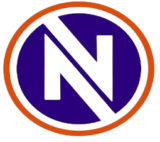Machining Centers
Today, machining centers are widely used in manufacturing sites. Machining centers are critical equipment for machining metal parts and components in addition to their primary purpose of die manufacture. As an example, machining centers in the automobile industry are used for efficient grinding and drilling of engine parts as well as for making dies for body components. Many other products commonly used in daily life and in industrial settings are manufactured in machining centers.
Manufacturing metal parts generally includes grinding surfaces and grooves in addition to using a number of complex machining methods such as drilling, boring (enlarging holes), and threading. Conventionally, different cutting tools such as mills, end mills, drills, boring tools, and taps were selectively used for these machining processes.
With the emergence of NC lathes later on, a manually-operated tool change function called a turret was developed, making blade exchanging more convenient. Machining centers take this idea one step forward through computer-controlled automated tool exchanges. Machining centers can continuously perform several types of machining at the same time on different surfaces of a workpiece, greatly improving production efficiency. Even today machining centers are still improving with advances in machining precision and speed year after year, making them a fundamental part of the manufacturing process.Machining centers can be broadly classified into three types based on their structure: horizontal, vertical, and gantry types. The horizontal type—the first to be developed—can be defined simply as a machine where the spindle to which the cutting tool is attached is mounted horizontally (or parallel to the floor). In contrast, vertical types have the spindle set upright. Gantry types, on the other hand, have a gate-like structure with the spindle mounted on the ceiling of the gate, facing downward.
Using the horizontal type as an example, the general structure of a machining center consists of a base part called a bed at the bottom, a saddle that moves on the bed, a table attached on top of the saddle for placing the raw material, a column installed perpendicularly to the bed, and a spindle head where the cutting tools are attached.
